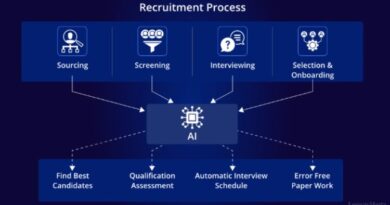Master Workflow Management Systems Without the Headache
Efficiency is everything. Companies that streamline their operations gain a competitive edge, and that’s where a workflow management system comes into play. These systems help automate repetitive tasks, reduce errors, and ensure smooth collaboration across teams. However, implementing and mastering them can sometimes feel overwhelming—especially with the sheer number of workflow apps available.
The good news? You don’t have to struggle. With the right approach, you can leverage a workflow management system to boost productivity without frustration. Whether you’re a small business owner or part of a large enterprise, understanding how to optimize these tools is key. In this guide, we’ll break down everything you need to know—from choosing the right workflow apps to maximizing their potential effortlessly.
Why Workflow Management Systems Matter
A workflow management system is designed to simplify complex processes by automating tasks, tracking progress, and ensuring accountability. Instead of relying on manual approvals or endless email chains, businesses can use these systems to create structured workflows that save time and reduce bottlenecks.
Popular workflow apps like Cflow offer intuitive drag-and-drop interfaces, making it easy for non-technical users to design and modify workflows. The right system can handle everything from invoice approvals to project management, ensuring that every step is documented and optimized.
The key benefit? Consistency. When workflows are automated, human errors decrease, and productivity soars. Plus, with real-time analytics, managers can identify inefficiencies and make data-driven improvements.
Choosing the Right Workflow Management System
Not all workflow management systems are created equal. Before committing to one, consider the following factors:
1. Ease of Use
A system that requires extensive training defeats the purpose of streamlining work. Look for workflow apps with a user-friendly interface and customizable templates.
2. Integration Capabilities
Your workflow management system should seamlessly integrate with existing tools like CRM software, email platforms, and cloud storage.
3. Scalability
As your business grows, your workflow needs will evolve. Choose a system that can adapt without requiring a complete overhaul.
4. Automation Features
The best systems allow for conditional logic—where tasks are automatically routed based on predefined rules. This minimizes manual intervention and speeds up processes.
For businesses looking for a robust yet easy-to-use solution, Cflow’s workflow management system is a great option, offering powerful automation without complexity.
Implementing Your Workflow System Successfully
Once you’ve selected the right workflow management system, the next step is implementation. Here’s how to do it without headaches:
1. Start Small
Begin with a single department or process (e.g., employee onboarding or purchase approvals). Test the system, gather feedback, and refine before scaling.
2. Train Your Team
Even the most intuitive workflow apps require some training. Conduct hands-on sessions to ensure everyone understands how to use the system effectively.
3. Monitor and Optimize
Use analytics to track performance. Are approvals taking too long? Are certain steps redundant? Continuously tweak workflows for maximum efficiency.
4. Encourage Adoption
Resistance to change is common. Highlight the benefits—less manual work, fewer errors, faster turnaround times—to get buy-in from your team.
Common Workflow Management Mistakes to Avoid
Even with the best workflow management system, mistakes can hinder success. Watch out for these pitfalls:
- Overcomplicating Workflows – Too many approval layers can slow things down. Keep processes simple and logical.
- Ignoring Feedback – End-users often spot inefficiencies. Listen to their suggestions for improvements.
- Failing to Update Workflows – Business needs change. Regularly review and adjust workflows to stay aligned with goals.
Conclusion
Mastering a workflow management system doesn’t have to be a headache. By choosing the right tool, implementing it strategically, and continuously optimizing, you can transform your business operations. Whether you’re using workflow apps for HR, finance, or project management, the key is to keep processes simple, automated, and adaptable.
Ready to take the next step? Explore Cflow’s workflow management system and discover how effortless workflow automation can be. With the right approach, you’ll streamline operations, boost productivity, and eliminate unnecessary stress—making workflow management a breeze.



